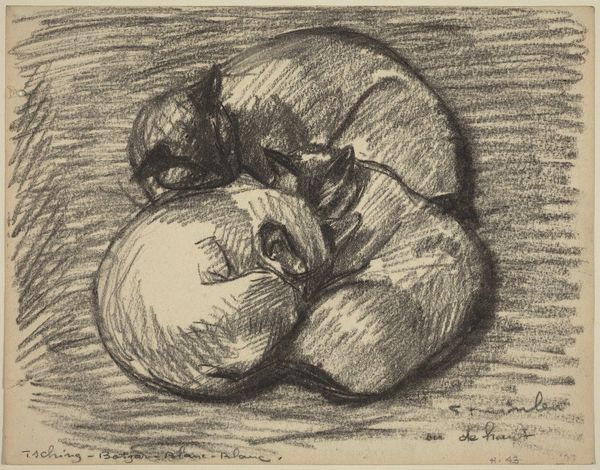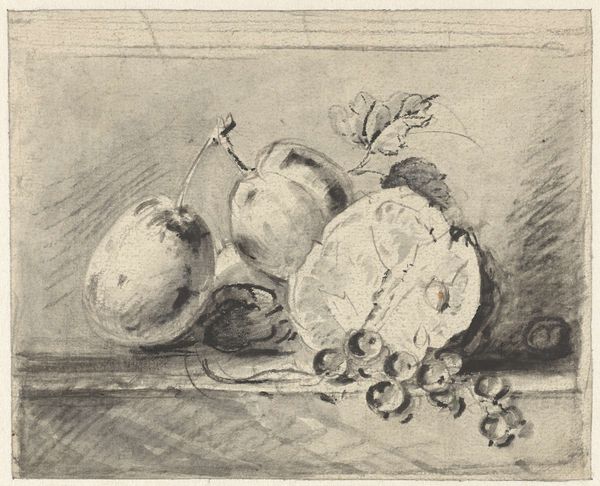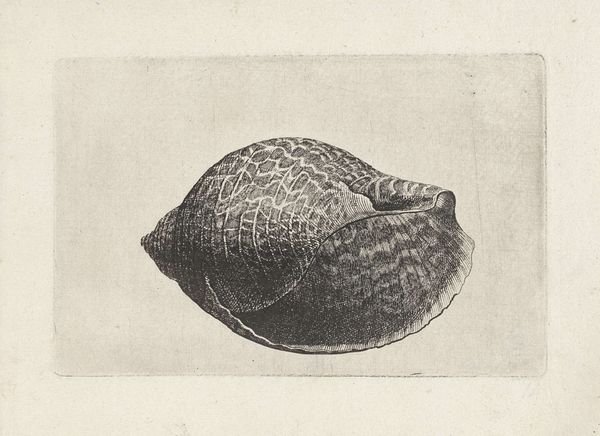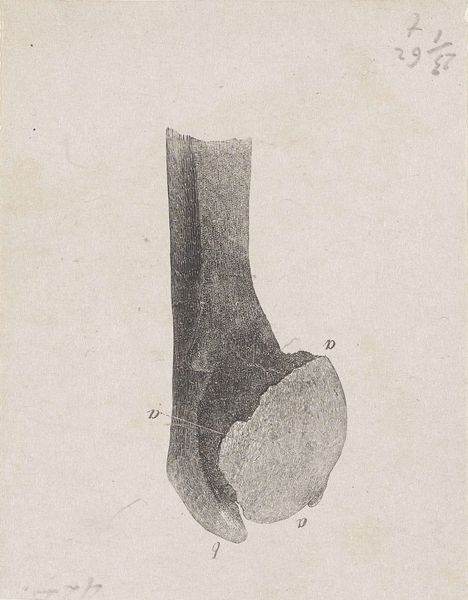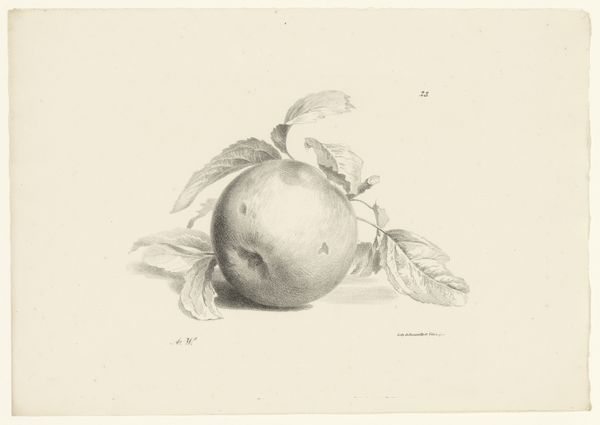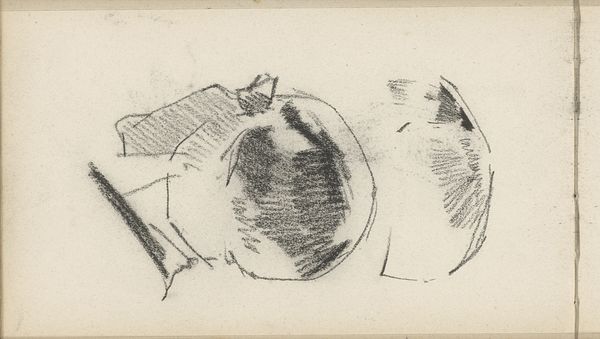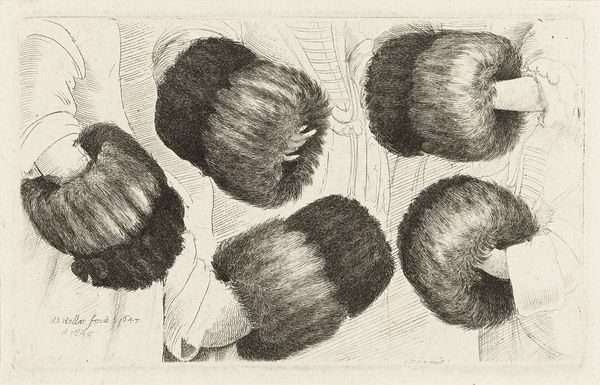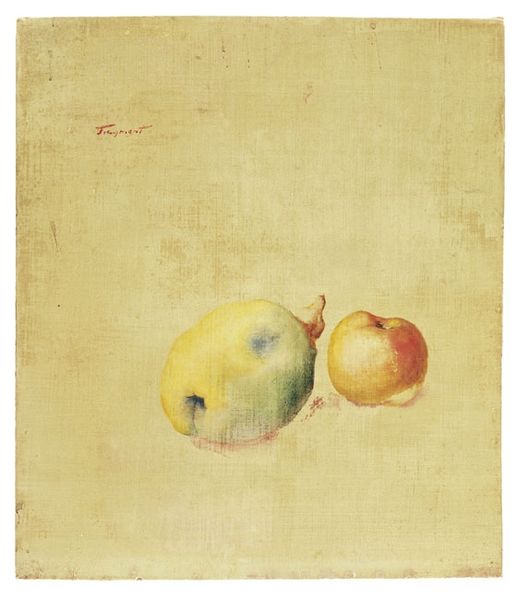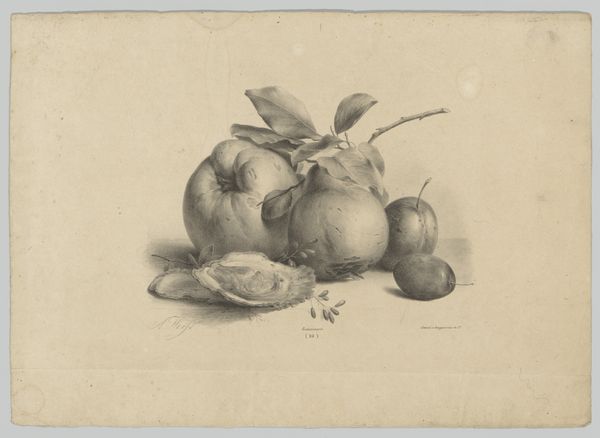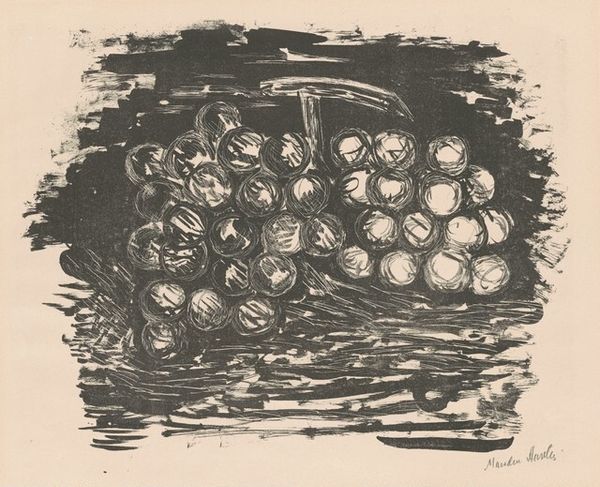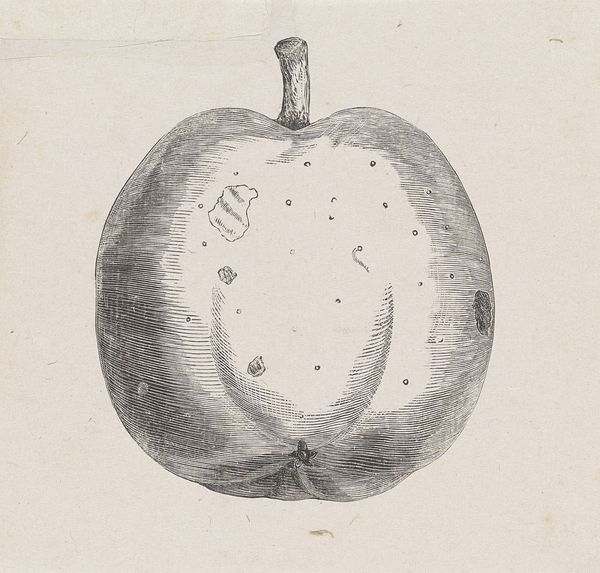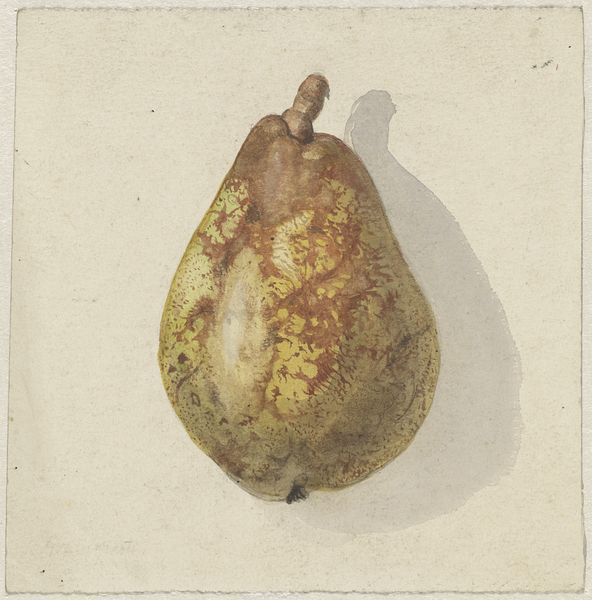
print, etching
# print
#
etching
#
fruit
#
modernism
#
realism
Copyright: Avigdor Arikha,Fair Use
Curator: Avigdor Arikha, working in 1972, created this rather somber etching titled, “Pear and Apple.” You can find it today at the Tate Britain. Editor: Huh. I don't know, it feels kind of moody, almost brooding, doesn’t it? The texture, that grainy quality…like charcoal rubbing, heavy with a feeling, maybe disappointment. Is that just me? Curator: No, not just you, I think. Arikha was deeply influenced by a return to realism after years of abstraction dominating the art world. But he also came to the conclusion that pure abstraction was impossible; all art refers back to something in the real world. He was insistent on rendering from life. Editor: Right, you can almost taste that grainy flesh and fibrous texture—and realism can be brutal. The almost aggressive lines making the shadowed sides of the forms. He's seeing what’s really there and kind of forcing us to confront it too. Not prettified, that's for sure. Curator: Exactly. Consider also his influences; he experienced significant trauma in his youth during the Holocaust, an event that undoubtedly colored his artistic choices and worldview. His devotion to pure observation in art making might be seen as an ethical practice. Editor: That adds layers, of course, Knowing the historical context—knowing that he focused on direct observation, after, I imagine, experiencing incredible loss. It's like the simple act of looking at these pieces of fruit becomes an act of bearing witness, not only to the outside world, but to an interior landscape, too. They are also vulnerable, imperfect—just fruit about to turn. Curator: I would also suggest paying close attention to how the artist plays with shadow, as shadow implies mortality in still life imagery. Editor: So, from a quick glance, what feels to be almost sad can be reread, more consciously—bearing witness, almost stubbornly—as a deliberate attempt to observe closely even as things decay. Curator: Precisely. It exemplifies how the direct study from life becomes charged with complex meanings, engaging with art historical traditions and with lived experience. Editor: Food for thought…or should I say, art for thought. Curator: Indeed. These still objects are full of weighty stories to consider.
Comments
No comments
Be the first to comment and join the conversation on the ultimate creative platform.

